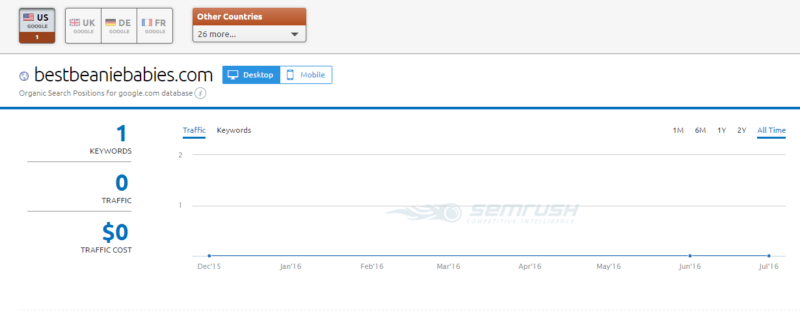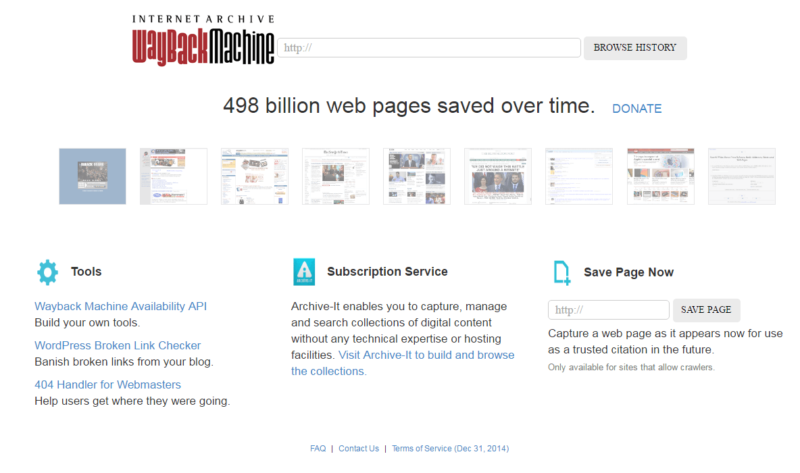Link prospecting tips and tricks
Link building is an art that many, including columnist Andrew Dennis, have learned through trial and error. Today, he shares some of what he's learned about how to identify and obtain better links.
There is no formal education or pathway into link building. Most professional link builders are self-taught or learned from a mentor who taught themselves — so if you want to enter into the SEO field (or need to bolster your own site’s link profile), it often means trial and error.
Due to the lack of formal education available, it’s vital that SEOs share their experience and expertise so we can learn and improve as an industry. Today, I’ll share my own experience to (hopefully) help you improve your link prospecting so you can find better sites that translate into better links.
Link prospecting requires research
Everything in link acquisition is predicated on research.
Whether it’s prospecting, outreach or audience discovery, research is a key element for success. Research is the only way to obtain the information and understanding of a page/site/niche/audience necessary to effectively secure links.
A firm understanding of how to use Google and search modifiers provides a solid foundation for link-building research, but I’ve found fostering the right mindset is what really leads to improved site-finding and link prospecting.
Here are some of my tips to help hone your link-building research.
Manual exploration
To take your link prospecting to the next level, you need to also incorporate strategic, manual exploration of the web.
Manual exploration is the expertise that experience grants. It’s about keeping your eyes open for potential opportunities all the time, no matter what project you’re working on. (Julie Joyce recently outlined a process she uses with spark files here on Search Engine Land.)
That doesn’t mean blindly surfing the web in hopes of landing on a relevant page. Strategic exploration builds on the research you’ve already done with understanding your industry, Google search and advanced search strings.
To perfect your prospecting skills, you must go beyond the surface-level results you achieve with Google, and really follow the breadcrumbs to find hidden opportunities.
For example, imagine you’re promoting a page that provides data on various performance tires. An advanced Google search on the query [car enthusiasts] will return prospects via restoration blogs and car news/review sites. But if you explore the results further, you might find a new avenue for fresh opportunities via the automotive racing niche.
This is creative thinking in link prospecting: actively following new ideas and opportunities while executing a proven tactic.
While the results you see in the SERPs often include worthy link prospects, if you investigate these sites further, you’ll likely find even more opportunities.
Here are some potential sources I use for uncovering further opportunities:
- Partnership pages: Relevant partner sites are likely to link to you also.
- Industry resource lists: Relevant content means potential for links.
- Blog communities: Guest authors or commenters may have their own sites worth promoting to.
- Backlink analysis: Sites that link to your prospect might yield more relevant opportunities.
- Associations: View membership list for potential prospects.
- Social communities: Search social communities or forums for relevant opportunities.
Through further investigation, you can find sites that are tangentially related to your site, where additional link opportunities may exist. In fact, this type of manual research can spark ideas for new avenues and strategies for your campaign.
Google search is an excellent place to start your prospecting process, but strategic, manual exploration will yield even more opportunity.
Sustainable campaigns rely on constant research and exploration fueled by industry insight and creativity.
Optimize your processes with tools
Introducing various SEO tools into your link research process can elevate your abilities and overall efficiency.
Backlink explorers, of course, jump to mind first. Tools such as:
Using backlink explorers is pretty elementary for securing links, and every link builder should have them in their arsenal. But there are some unique ways to leverage tools to improve your prospecting process.
BuzzSumo and BuzzStream can help find influential sites and personalities within your niche. Both can be invaluable, as they optimize processes and provide insight that improves the efficacy of your link development.
For example, you can set up BuzzSumo to alert you of unlinked mentions. And BuzzStream Discovery can help you learn more about potential link prospects prior to contacting them.
Furthermore, both tools can be used to track specific authors, which is great for determining which sites industry leaders value and interact with. These are sites you’ll want to vet but can be fairly confident are worth adding to your project’s list of sites.
Taking the idea a step further, manually reviewing other authors they commonly interact with will expand your network and potentially net further tangential link opportunities and sites worth exploring.
Mozbar is a great tool for link prospecting, as it provides surface-level data on any potential site quickly and easily. In fact, Mozbar can give you this information directly in the search results:
This can help you quickly identify high-authority opportunities within the SERPs. Of course, you want to avoid metric blindness, but having this information serves as a good baseline during your research process.
SEMrush is another worthy addition to your toolkit. Among other benefits, SEMrush can be especially helpful for checking the traffic of a potential prospect; you don’t want to build links to sites that are ghost towns.
Analyzing these traffic graphs can also provide insight into the engagement levels, as well as show which way the site is trending. Also, you can spot red flags where traffic suddenly dropped dramatically (i.e., penalization — not a site you want a link from).
SEMrush will also suggest competitors based on shared keywords the sites rank for in search. While you’re reviewing traffic for a prospect, see which sites share similar keyword rankings and SERPs with your link prospect (Simply flip over to the competitor tab within the Organic Research section). These could be extremely relevant sites to your link-building project and further expand your circle of sites outward, increasing your link prospecting efficacy.
Remember, while SEMrush is an excellent tool, it’s not Google. SEMrush is a third-party tool and doesn’t have full access to Google’s index, and it can’t report site traffic 100 percent accurately. You should always review third-party data with a grain of salt and manually check any information you glean from a tool.
To improve efficiency and efficacy, consider implementing the tools listed here in your research process.
Scrutinize top-performing pages in search
As an SEO, you should be consistently checking the rankings for the terms, keywords or phrases for which you want to rank.
One of the most common ways SEOs employ backlink explorers is for direct competitor analysis, to discover which sites are linking to their competitors.
The truth is, you’re competing with any site ranking for your keywords in some way. Don’t limit your backlink audits to direct competitors only. Analyze the backlinks of ALL the sites ranking for your keywords, particularly the head terms.
What better page to scrutinize than the page already ranking for your keyword?
If you want to find a plethora of link opportunities quickly, simply see who’s linking to the pages currently ranking for your keywords. If you’re targeting competitive search queries, they’ll rank on the efficacy of those links (and of course, sound on-page and technical SEO). By analyzing the top 20 results, you should be able to find a multitude of link prospects — particularly if your page is a better result.
Keep in mind there are always more opportunities, so don’t backlink with blinders on. Truly examine each page you find, and keep your eyes open for additional opportunities.
The best link prospectors work in this way: Each link opportunity breeds a new link opportunity, and so on. Before you know it, you have a large list of sites by naturally exploring the online web of sites within your industry.
To give an example, maybe your resource isn’t a particularly good fit for one site, but on that page you find a broken link that points to a 404. Using the Wayback Machine, you see the content is relevant but no longer live on the web.
If you have a page that serves as a good replacement for that dead resource (or are planning to create such content), there’s every reason to expect the page in question would change the link to point to your page, instead — if you politely email them. Furthermore, you can use your backlink explorer to find all the sites linking to the broken resource.
Final thoughts
Improving your link-building skills is all about honing your ability to recognize link opportunities. You should always keep your head up and look for potential prospects beyond the obvious. A link builder’s job is to make relevant connections on the web.
As Eric Ward said, a link builder should “connect that which should be connected.”
Link-building will always be a manual process. It takes a human to understand where connections (links) make sense. Honing your ability to recognize these potential connections around the web comes with time, but hopefully, the processes and tips listed here will help you develop those skills more quickly and efficiently.
Opinions expressed in this article are those of the guest author and not necessarily Search Engine Land. Staff authors are listed here.
Related stories



